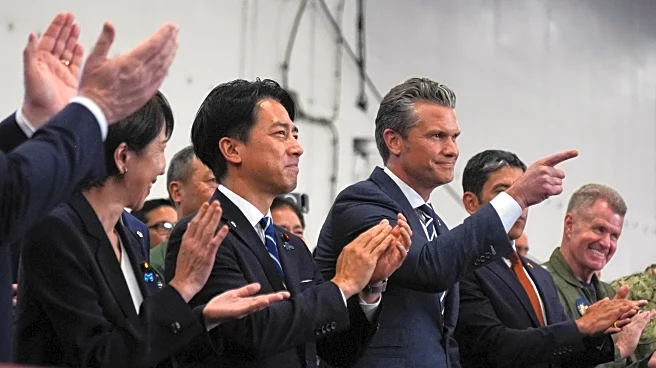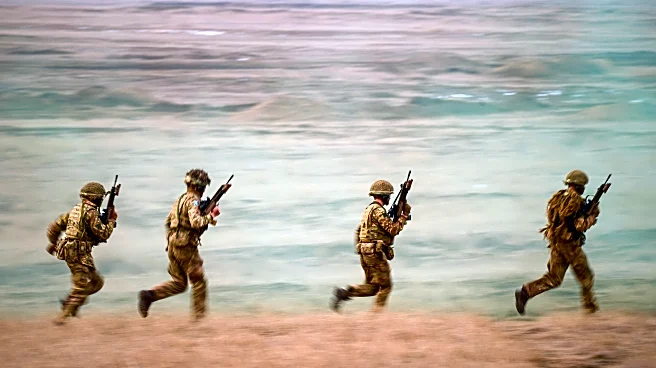What's Happening?
The insurgency in Iraq is characterized by small groups operating without a precise central command, aiming to disrupt the political process and drive US forces out. This insurgency involves multiple organizations,
such as Al Qa’ida and Al Ansar, but lacks cohesion and a unifying ideology. The insurgents communicate, coordinate, and conduct campaigns in a loose environment, exchanging intelligence and weapons before dispersing. Their strategy is to seize power by draining the Coalition financially and winning popular support through coercion and fear.
Why It's Important?
The Iraqi insurgency represents a potential new type of insurgency conflict, challenging traditional notions of insurgency with its decentralized and non-hierarchical structure. This insurgency poses a significant threat to political stability and security in Iraq, with implications for US foreign policy and military strategy. Understanding the dynamics of this insurgency can inform counterinsurgency efforts and help prevent similar conflicts from emerging in other regions.
What's Next?
The future of the Iraqi insurgency will determine whether it represents a new type of insurgency or a phenomenon unique to Iraq. If the insurgency fails to spread to other countries, it may be considered a localized conflict. However, if similar insurgencies emerge elsewhere, it could signal a shift in insurgency strategy globally. Continued monitoring and analysis of the insurgency's development are essential to anticipate potential threats and adapt counterinsurgency strategies accordingly.
Beyond the Headlines
The decentralized nature of the Iraqi insurgency challenges traditional counterinsurgency approaches, requiring innovative strategies to address the lack of a central command and unifying ideology. The insurgency's ability to operate without a clear leadership structure highlights the importance of understanding the motivations and dynamics of insurgent groups to effectively counter their influence.













